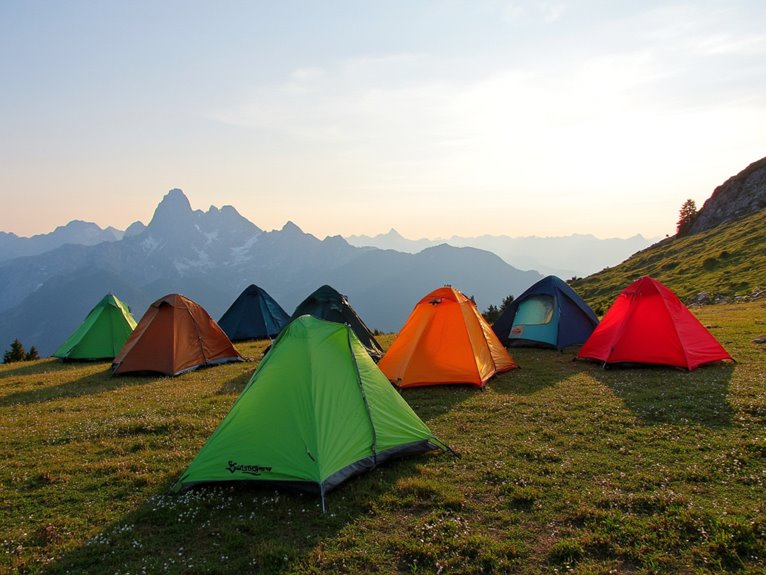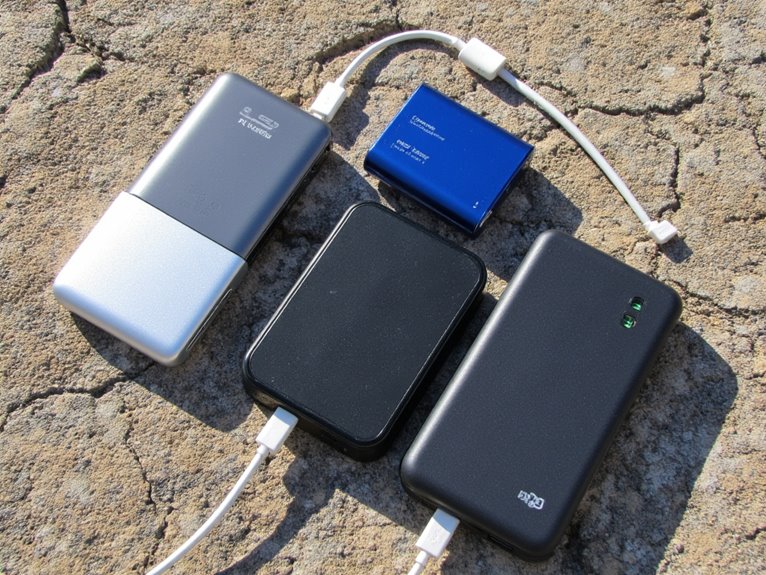Are Packrafts Durable?
Packrafts are remarkably durable, thanks to the carefully selected materials and construction methods that enable them to withstand rugged outdoor adventures, harsh environmental conditions, and heavy use. The combination of rubber, nylon, and polyester provides excellent abrasion resistance, tensile strength, and shock absorption. High-quality packrafts can withstand turbulent waters, rough terrain, and extreme weather conditions, making them ideal for adventure seekers. But there's more to packraft durability than just materials and construction – there are tests, quality control measures, and user experiences that reveal the full extent of their ruggedness.
We are supported by our audience. When you purchase through links on our site, we may earn an affiliate commission, at no extra cost for you. Learn more. Last update on 6th January 2026 / Images from Amazon Product Advertising API.
Construction Materials Matter
Crafted from a variety of materials, including durable rubber, nylon, and polyester, packrafts owe their remarkable resilience to the careful selection of construction materials that can withstand the rigors of rugged outdoor adventures.
The choice of materials is vital, as it directly impacts the packraft's ability to withstand harsh environmental conditions and heavy use.
For instance, rubber provides excellent abrasion resistance, while nylon and polyester offer exceptional tensile strength.
The combination of these materials enables packrafts to absorb shocks, resist punctures, and maintain their integrity in the face of turbulent waters and rough terrain.
Durability of Inflatable Tubes
In terms of the durability of inflatable tubes, the materials used play a pivotal role in determining their resilience.
The abrasion resistance of these tubes is particularly vital, as it directly affects their ability to withstand the rigors of outdoor adventures.
Materials Used Matter
The durability of packraft inflatable tubes hinges substantially on the quality of materials used in their construction, as inferior materials can compromise the tube's resistance to punctures, abrasion, and UV degradation.
High-quality packrafts typically employ durable materials such as heavy-duty rubber, PVC, or TPU (thermoplastic polyurethane) that provide excellent resistance to abrasion and punctures.
These materials are often reinforced with additional layers or coatings to bolster their durability.
The use of high-quality materials guarantees that the tubes can withstand the rigors of outdoor adventures, including exposure to harsh weather conditions, rough terrain, and repeated inflation and deflation.
Abrasion Resistance Testing
Six key abrasion resistance tests are employed to evaluate the durability of packraft inflatable tubes, simulating real-world scenarios that can compromise their integrity. These tests assess the tubes' ability to withstand scratches, scrapes, and abrasions that can occur during transportation, storage, and on-water use.
The following tests are conducted to evaluate abrasion resistance:
- Taber abrasion test: Evaluates the tube's resistance to wear and tear caused by friction.
- Martindale abrasion test: Simulates the wear and tear caused by repeated rubbing against rocks, branches, and other surfaces.
- Scotch-Brite abrasion test: Assesses the tube's resistance to scratches and scrapes.
- Reciprocating abrasion test: Mimics the back-and-forth motion of a packraft being dragged across rough surfaces.
Welds and Seams Under Scrutiny
Scrutinizing the integrity of packrafts begins at the seams, where the slightest weakness in welds can spell disaster on the water.
A packraft's seams are its most vulnerable points, as they are subjected to constant stress and pressure.
Manufacturers employ various welding techniques to reinforce these critical areas, including radio-frequency (RF) welding, hot air welding, and tape seams.
The quality of these welds can make or break a packraft's durability.
A well-executed weld can withstand the rigors of whitewater, while a subpar one can lead to catastrophic failure.
It's essential to inspect the seams and welds of a packraft before setting out on an adventure, ensuring that they can withstand the forces of nature.
Handling Abrasion and Punctures
Beyond the seams, a packraft's durability is also contingent upon its ability to resist abrasion and punctures, which can arise from contact with rocky shores, submerged branches, or even the rigors of transportation and storage.
To combat these threats, packraft manufacturers employ various strategies.
Thick, abrasion-resistant materials: Many packrafts feature thick, puncture-resistant materials that can withstand scratches and scrapes.
Reinforced stress points: Manufacturers often reinforce high-stress areas, such as the bow and stern, with additional layers of material.
Protective coatings: Some packrafts feature coatings that provide an extra layer of protection against abrasion and punctures.
Innovative designs: Innovative designs, such as tapered tubes and rounded edges, can help reduce the risk of punctures and abrasion.
Exposure to Harsh Weather
When venturing into the wilderness, packrafts are inevitably exposed to harsh weather conditions that can compromise their durability.
Prolonged exposure to the sun's intense UV rays, torrential rains, and freezing temperatures can lead to material degradation, compromising the packraft's performance and safety.
Understanding the effects of these environmental stressors is essential in ensuring the longevity and reliability of these versatile watercraft.
Sun Damage Risk
Most packrafters inevitably face prolonged exposure to harsh weather conditions, substantially increasing the risk of sun damage to their vessels.
Prolonged UV exposure can cause the materials to degrade, leading to cracks, fading, and discoloration.
To minimize sun damage, consider the following:
Store your packraft in a shaded area when not in use to reduce direct sun exposure.
Use a UV-resistant storage bag to protect your packraft from harmful rays.
Apply a UV protectant to your packraft's surface to create a barrier against sun damage.
Regularly inspect your packraft for signs of sun damage, addressing any issues promptly to prevent further deterioration.
Rain and Hail
One of the most formidable challenges packrafters face is steering their vessels through torrential rain and hail, which can lead to compromised buoyancy, reduced maneuverability, and even catastrophic damage.
The relentless pounding of hailstones can cause micro-punctures, allowing water to seep in and weighing down the raft. Rain, on the other hand, can saturate the fabric, increasing its weight and decreasing its responsiveness.
In addition, the reduced visibility and turbulent water conditions can make navigation treacherous, even for experienced packrafters.
To mitigate these risks, choosing a packraft with a durable, water-resistant material is crucial, and taking precautions such as applying a waterproof coating and regularly inspecting the vessel for damage are vital.
Freezing Temperature Effects
In temperatures below -20°C, packrafts are susceptible to a unique set of challenges that can compromise their performance and integrity, including the increased viscosity of lubricants, stiffened materials, and ice accumulation on the hull.
In such extreme conditions, it's essential to take precautions to ensure the packraft's durability.
Material selection: Choose materials that maintain flexibility and resistance to cracking in freezing temperatures.
Lubricant maintenance: Regularly inspect and maintain lubricants to prevent viscosity increases that can hinder performance.
Hull protection: Apply protective coatings or wax to prevent ice accumulation and minimize damage.
Storage and transport: Store and transport packrafts in a way that prevents creasing, folding, or compression, which can cause damage in freezing temperatures.
Effects of UV Light Damage
Prolonged exposure to UV light can cause the polyurethane coatings on packrafts to degrade, leading to a loss of flexibility and eventual cracking.
This degradation process can occur rapidly, especially in tropical or high-altitude environments where UV radiation is more intense.
As the coatings break down, the packraft's hull may become brittle and prone to punctures.
In addition, UV damage can also affect the adhesive bonds between the fabric layers, compromising the packraft's overall structural integrity.
To mitigate these effects, storing packrafts in shaded areas or using UV-resistant coatings is vital.
Regular inspections and maintenance are also key to identifying and addressing any UV-related damage before it becomes a safety issue.
Impact of Water Conditions
Water conditions can have a profound impact on packraft durability, as exposure to abrasive or contaminated water can erode the hull's protective coatings and compromise its structural integrity.
The type of water you're paddling in can greatly affect your packraft's lifespan.
Silty or muddy water can scratch the hull and compromise the coatings.
Saltwater can corrode metal components and accelerate degradation.
Polluted or contaminated water can break down the materials and harm the hull.
Whitewater or rough seas can cause abrasion, scratches, and impact damage.
Understanding the impact of water conditions is vital in maintaining your packraft's durability and extending its lifespan.
Maintenance and Repair Options
Regular inspections and prompt repairs can mean the difference between a long, trouble-free packrafting career and a series of costly, frustrating setbacks.
Routine maintenance tasks, such as cleaning and storing the packraft properly, can prevent damage and extend its lifespan.
Additionally, learning basic repair techniques, such as patching and sealing, can help fix minor issues before they escalate.
Many manufacturers also offer repair services or provide repair kits specifically designed for their products.
In addition, keeping a repair kit on hand, stocked with essentials like patches, adhesive, and a pump, can enable quick fixes in the field.
Real-World User Experiences
While traversing the rugged terrain of Alaska's backcountry, seasoned packrafter, Alex, recounts how his trusty packraft endured a grueling 300-mile expedition, withstanding torrential rains, rocky rapids, and even a curious bear's curious prodding.
This real-world user experience is a testament to the durability of packrafts. Alex's story is not an isolated incident; many packrafters have shared similar tales of their vessels' resilience.
Packrafts have been known to withstand various challenges, including:
River crossings: Packrafts have been known to withstand powerful currents and rocky riverbeds.
Inclement weather: They have braved torrential rains, hail, and even snowstorms.
Wildlife encounters: Packrafts have been poked, prodded, and even bitten by curious wildlife.
Tortuous terrain: They have navigated treacherous portages and been dragged over rough land.



